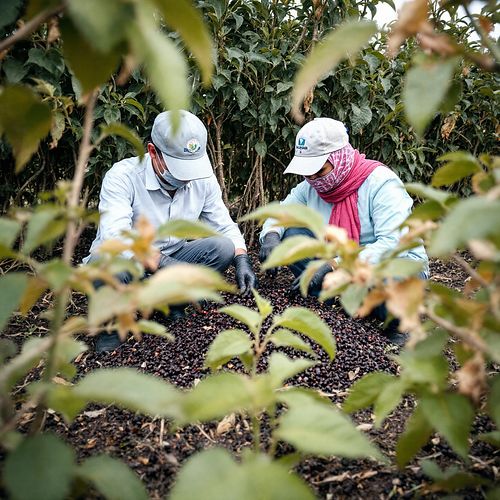2025 // Week 21 – Vietnam Pepper Market: Industry Challenges and Trends
Current Market Conditions and Price Trends
Vietnam’s pepper market is currently experiencing moderate price stability with values ranging between 151,000 – 152,000 VND/kg (approximately $6.05-$6.09 USD/kg). This relative stability comes amid improving demand signals from several key international markets, including the European Union, various Asian countries, and the United States, all of which have shown increased purchasing activity in recent months.
Of particular note is the Chinese market, which has resumed purchasing Vietnamese pepper after a period of reduced activity. However, industry analysts observe that these purchases remain cautious, with importers committing to smaller volumes than historical averages. This measured approach from Chinese buyers suggests lingering uncertainty about longer-term market conditions despite the current price stability.
Domestically, Vietnam’s pepper farmers have adopted a strategic holding pattern, with many choosing to stockpile their harvests rather than sell at current prices. This withholding behavior is based on expectations of potential future price increases and represents a calculated risk by producers. The collective stockpiling across numerous small and medium-sized farms has effectively reduced available market supply, creating additional upward pressure on prices beyond the natural demand-supply dynamics.
Pepper price developments in the Central Highlands and Southeast from First 2023 to May 17, 2025 (Unit: VND/kg)

Market analysts attribute the current price levels to a combination of reduced harvest volumes in several growing regions, sustained export demand, and the aforementioned stockpiling behavior by farmers. The interplay of these factors has created relatively favorable conditions for sellers who choose to enter the market, though many continue to wait for potentially higher returns.
Regional Production Challenges: Quang Tri Province
While the major pepper-growing regions in Vietnam’s Central Highlands and Southeast provinces have concluded their harvests for the season, Quang Tri province presents a dramatically different situation. According to reports from Báo Tin tức, pepper farmers in this province are experiencing what many describe as one of the most catastrophic harvests in recent memory, with yields falling far below historical averages and expectations.
Official data from the Quang Tri Sub-Department of Crop Production and Plant Protection confirms approximately 1,900 hectares dedicated to pepper cultivation across the province. The primary growing districts include Gio Linh, Cam Lộ, Vĩnh Linh, and Hướng Hóa, areas that have traditionally been reliable producers in Vietnam’s pepper industry. However, the 2024 season has proven exceptionally challenging for these regions.

Weather Impacts and Root Causes of Production Decline
The primary driver behind the dramatic production decline in Quang Tri and other affected regions can be traced to abnormal weather patterns experienced throughout 2024. Agricultural experts and local officials have identified excessive rainfall as the fundamental cause, with cascading effects that have damaged pepper plants at multiple growth stages. The unusually wet conditions have disrupted the delicate balance needed for optimal pepper cultivation.
When analyzing the mechanism of crop failure, hydrology experts point to the sustained elevated groundwater levels as particularly damaging. Pepper plants, which require well-drained soil conditions, suffered from prolonged root saturation. This excessive moisture created ideal conditions for pathogenic fungi that cause root rot diseases, including Phytophthora and Fusarium species. Once established, these infections spread rapidly through the root systems, compromising the plants’ ability to absorb nutrients and water properly.

The damage extended beyond direct plant mortality to affect reproductive capacity. Even pepper vines that survived the waterlogged conditions displayed significantly reduced flowering and poor fruit set rates.
Market Response and Farmer Strategies
The significant reduction in pepper yields across multiple growing regions has triggered notable responses from various stakeholders in Vietnam’s pepper industry. Farmers, traders, and market analysts are all adjusting their strategies based on the evolving production landscape and price environment. These adaptations will likely influence market dynamics throughout the remainder of 2024 and potentially into the next growing season.
Farmer Stockpiling Behavior
The most pronounced response from producers has been increased stockpiling activity. Despite facing economic pressures, many farmers are deliberately withholding pepper stocks from the market, creating an artificial supply constraint. This strategy is based on expectations that the documented production shortfalls will eventually force prices higher as available inventory diminishes.
Agricultural economists note that this stockpiling represents a calculated risk for farmers. While holding inventory may eventually yield higher returns if prices rise significantly, it also involves carrying costs, storage risks, and delayed income realization. For farmers already experiencing financial strain from reduced harvests, this approach requires careful balance between immediate cash flow needs and potential future gains.

Market reporting indicates that stockpiling behavior is most prevalent among mid-sized producers with sufficient financial reserves to weather temporary cash flow constraints. Smaller-scale farmers, particularly those in severely affected regions like Quang Tri, often lack this flexibility due to immediate financial pressures and may be forced to sell regardless of price conditions.
Competitive Landscape and Indonesia’s Strategic
While Vietnam navigates its production challenges, developments in competing pepper-producing nations present both potential threats and opportunities for the Vietnamese pepper industry. Indonesia, historically one of Vietnam’s primary competitors in the global pepper market, is implementing strategic initiatives that may reshape regional production dynamics in the coming years.
According to Indonesian media reports, the Indonesian government has identified spices, including pepper, as a priority sector for agricultural development. This decision builds on Indonesia’s long historical connection to the spice trade and represents a concerted effort to strengthen the country’s position in global spice markets. The Indonesian Ministry of Agriculture has specifically designated pepper as a key focus crop in its 2025 spice-growing region development program.
For Vietnam’s pepper industry, Indonesia’s strategic focus represents a significant competitive consideration. Agricultural analysts suggest that Indonesia’s renewed emphasis on pepper cultivation could eventually increase regional supply, potentially affecting price dynamics in Asian markets where both countries compete for market share. However, the full impact of Indonesia’s development program will take time to materialize, as new plantings require several years to reach full production capacity.

